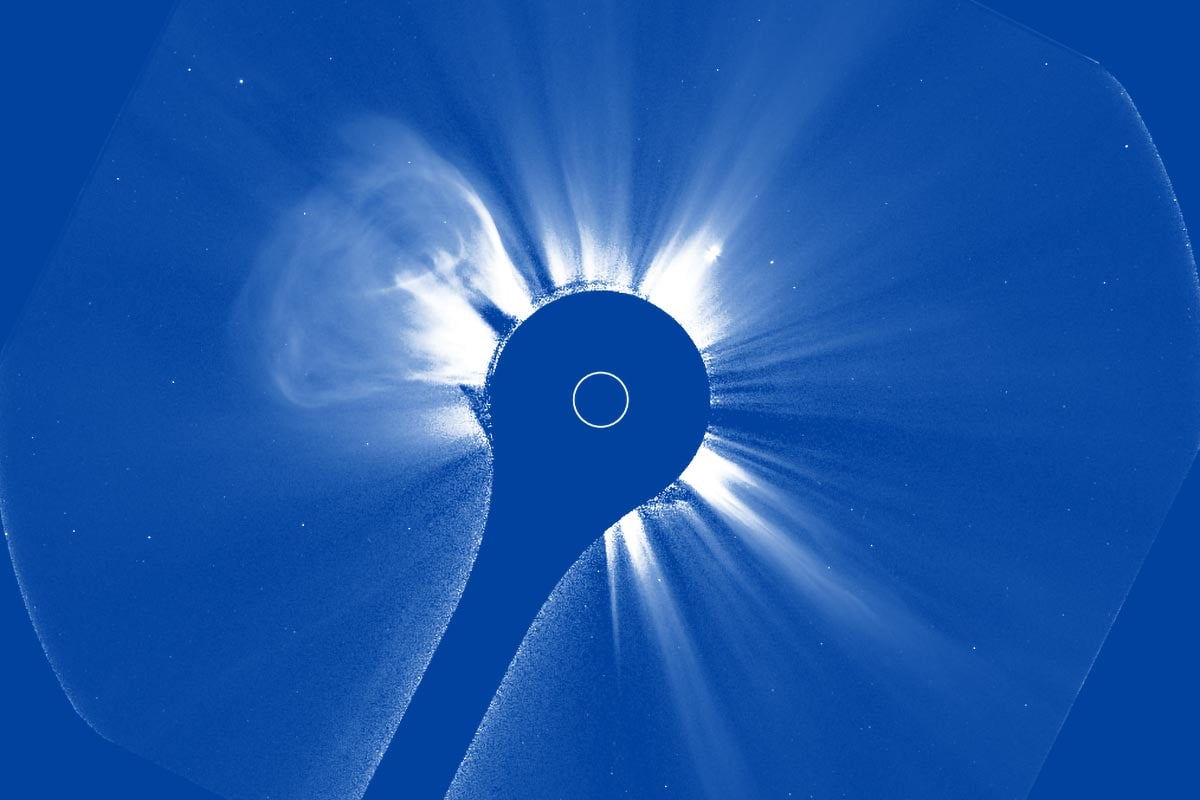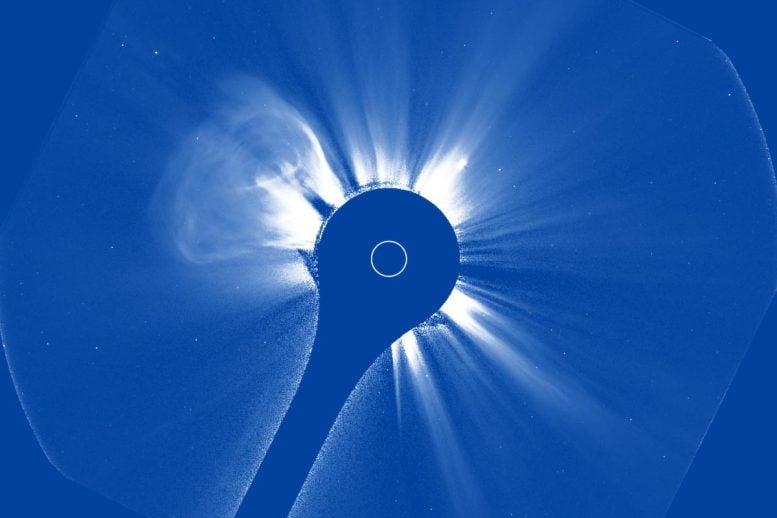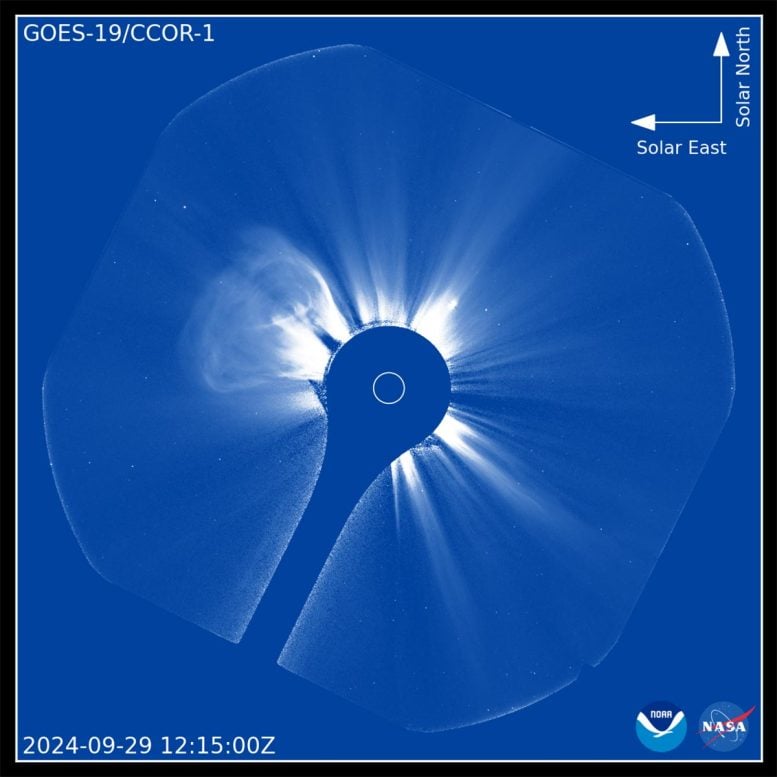

NOAA’s new Compact Coronagraph, CCOR-1, onboard the GOES-19 satellite, has begun transmitting its first images, revealing solar activities like coronal mass ejections (CMEs).
NOAA has released the first images from the Compact Coronagraph (CCOR-1), a powerful solar telescope aboard the new GOES-19 satellite. CCOR-1, the world’s first operational space-based coronagraph, began observing the sun’s corona—the faint, outermost layer of the solar atmosphere—on September 19, 2024.
The CCOR-1 is designed to monitor the corona and predict coronal mass ejections (CMEs), which are massive eruptions of plasma and magnetic fields from the sun. These CMEs can have significant effects on space weather and impact Earth.
Impact of Coronal Mass Ejections
When CMEs are directed toward Earth, they can trigger geomagnetic storms, which may disrupt satellites, GPS/GNSS systems, astronaut safety, aviation communications, and power grids. On a more familiar note, the stunning auroras we see are the result of these storms interacting with Earth’s upper atmosphere.
CCOR-1 delivers uninterrupted coverage of the corona with a new image every 15 minutes. CCOR-1 uses an occulting disk (the dark blue circle at the center of the video) to eclipse the sun (depicted as the smaller white circle) so we can view the extremely faint corona.
CCOR-1’s Observational Achievements
This first CCOR-1 video (above) shows a clearly defined CME emerging from the east limb (left side) of the sun around the 10:00 time mark, with Universal Time (UT) shown at the lower left. The sun also dazzles with its small and large streamers, bright radial structures along which the solar plasma travels steadily outward. The CME explosions bend and sometimes disrupt the streaming plasma, buzzing past it at speeds of hundreds to thousands of miles per second.
CCOR-1 is the first in a series of NOAA coronagraphs. Similar instruments will be placed on the sun-Earth line and around the sun, as part of NOAA’s Space Weather Follow-On and Space Weather Next programs, respectively.

Future Plans and Testing of GOES-19
GOES-19 is currently undergoing post-launch testing and checkout of its instruments and systems. After GOES-19 is assigned the operational role as NOAA’s GOES East satellite in spring 2025, NOAA’s Space Weather Prediction Center will begin using CCOR-1 observations to inform and improve its forecasts and warnings of impending space weather.
For more on CCOR-1, see Unlock the Sun’s Secrets: New Telescope Captures Jaw-Dropping Images.